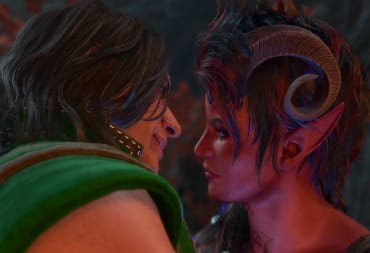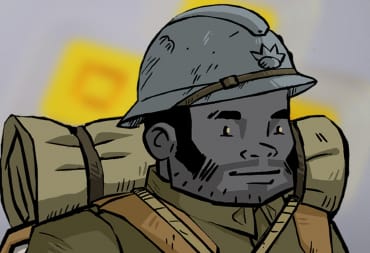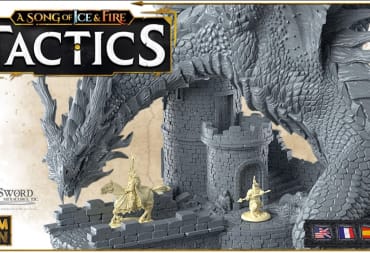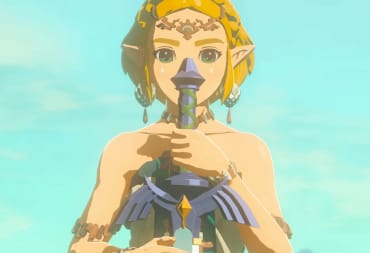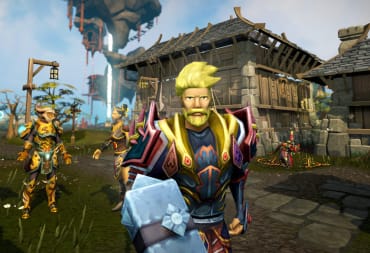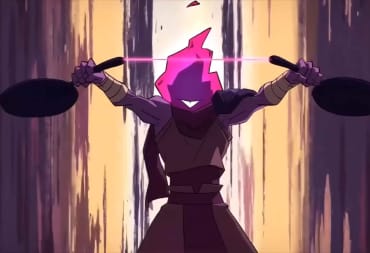It's impossible. This is a phrase I've muttered no less than 10 times in the last hour. Every time I come across some new creation in Dreams I mutter these words because I can't believe it. A mapmaker was always a novel tool in games, but few attempts have approached the level of crafting an entire game. LittleBigPlanet was a pretty good attempt at such a wild concept, but Media Molecule is making a second, bigger, effort with Dreams. It's a lofty goal, especially on the PlayStation 4, which is so close to the end of its lifecycle. I needed to see how deep it could go.
Dreams' campaign takes the form of "Art's Dream", a campaign made entirely using Dreams' tools by Media Molecule. Naturally, part of its purpose is to show players what you can make using the game. In that sense, Art's Dream does a fantastic job. However, if you choose to just consider Art's Dream as the single-player campaign for Dreams then you're going to come away with one of the most shockingly heartfelt, genuinely fun, well made, and just straight-up beautiful games that I've had the pleasure to play in some time.
Art's Art

The campaign follows Art, a jazz musician and double bass player who just had a falling out with his band after his attempts to steal the spotlight. Plagued by a massive ego that hides insecurities, Art hits a rock bottom and finds himself homeless and an emotional wreck. Art begins to retreat into his dreams, using toys from his childhood to tell his story and begin tearing down his ego so he can work his way back into a level of comfort, both in playing the bass again and rejoining his old band. Along the way, he's stalked by a mysterious blue man that seems hellbent on keeping him from getting better and embarks on a quest to save his old stuffed dragon toy from a crow named Thornbeak.
Both celebrating in the joys of creation and understanding the difficulty in doing so, Dreams tells one of the most heartfelt stories I've seen in a while. Art is easy to connect with, and I could both relate to him and his desire to prove himself. The whole journey is highlighted with a fantastic art style that manages to mix and match several styles. The low-poly and film noir look should clash so hard with segments that look like a cute mascot platformer or like a young adult sci-fi game. Somehow, they combine into a strangely impressively cohesive whole. Combine this with a fantastic jazzy soundtrack and excellent voice acting, and you really have a special story wrapped up with a draw-dropping audio-visual package.
When it comes to actually playing Art's Dream, it doesn't quite stick to any one specific style. Art has two major dreams he switches between. One follows Francis and Foxy, a pair of stuffed animals each with unique abilities. Francis has a big hammer she can swing around to smash things, while Foxy can throw frisbees to hit faraway targets. The other segments see you playing as a robot named D-Bug who must roll around and use his ability to charge switches to advance. Both are 3D platformers, although Francis and Foxy's segments are closer in design to a beat 'em up while D-Bug plays more like a puzzle platformer. Either way, both are gleefully fun segments, with mechanics that continued to be well worth exploring and experiencing.
What Genre? Every Genre.

Between chapters, you'll take control of Art directly. His segments play more like a point and click adventure, with you collecting items and solving little puzzles. For example, one section requires you to fiddle with knobs on several musical devices so you can create a beat for Art to play along with. Another requires you to rummage through people's luggage so you can find a train ticket. It's never very difficult, but it's something different and rather fun to play. I was surprised to see dialogue choices when Art talks to other characters as well, and while they don't have some kind of massive impact on the story, it's fun to shape Art's personality a little more.
However, while those are the main style of gameplay, Art's Dream dabbles in a few other genres. One that I particularly enjoyed was the occasional break into rhythm games, where you watch a character sing and dance and present prize bubbles as they do, leading you to try and pick them up before they vanish. Other late-game segments take the form of auto-runners, SHMUPS, twin-stick shooters, and more. It's a fantastic way to show off all the things you can do in Dreams, while also adding a ton of fun variety in the gameplay.
Look, if all Dreams came with was Art's Dream, I have no doubt in my mind that I would be giving it a 9, maybe even a 9.5. It's Media Molecule's most well crafted single-player campaign since Tearaway. It's really special. Then I finished it and came to a shocking realization: there's so much more to Dreams. That phrase hit me again: it's impossible. Every part of what follows feels like it just shouldn't be possible on a PlayStation game. Yet here we are.
Dreams is an art studio. It's a game engine. It's a music creation tool. Within minutes I had loaded up a game where I was running around a museum in first-person, smashing as many art exhibits as possible while dodging security. Following this, I listened to someone's remix of Undertale's Meglovania. I took control of a giant monster and attacked a city, with the game showing me news clips of my destruction. I cooked a five-star meal using only my left hand. I helped a young mage escape out of a dark dungeon in a turn-based RPG. I saw someone create a full English breakfast. I played a remake of Fallout 4 and a fan-game that tried to recreate what they thought Silent Hills would be. There were new experiences waiting around every corner, and I never felt a sense of déjà vu.
Stairway to Heaven

One of the biggest complaints leveled at LittleBigPlanet, the last "make your own games" game created by Media Molecule, is that it was pretty clear you could only make one type of game: 2.5d platformers. Everything else felt like a super clunky facsimile of what it should be. This is not the case with Dreams. The only thing that kept these games from performing exactly how I'd expect is if they were just made poorly. Every game I played felt like it was made using its own tools and that it comfortably fits in its intended form. No longer did I have to awkwardly pull levers to try and get anything vaguely outside of a platformer. It all fits like a glove.
It's impossible. I've repeated this like a mantra, like somehow Dreams is going to fade away when I'm not looking. Already there are hundreds of projects available for me to try. The quality isn't going to be great on all of them, but some of the best ones really feel like I've been transported to an entirely different game. Perhaps the only real complaint I have about this is that, technically, the best is yet to come. I am certain, the longer Dreams is out, the better the content players create with it will be.
At the end of all this, I am hit with a realization. I am playing some future superstar developer's first efforts in game creation. I am listening to some composer's first track, the first step towards their platinum album. I found the first piece of 3D modeling by a future artist. Dreams is the catalyst that launches so many into the field. It will nurture their creative efforts, give them tangible results that they can build off of, teach them the ins and outs of game design while also providing them with an audience for their work. All of this from a console.
Even I Tried to Make Something

I even tried my own hand at creation. Do I have anything worth showing? Not yet. Thankfully, Dreams is absolutely loaded with tutorials that go over nearly every tool, how to use them, and different skill levels that you can work your way up to. You can also take a peek into the internal wiring of many of the available projects in Dreams, with the ability to pull assets and mechanics from them. Better yet, if your work is pulled, you'll appear in the credits on projects that use it. Everything needed is here for someone to make their own game just how they want it.
There are several control schemes you can use as well, to help you craft your designs. With just a DualShock you can use either motion controls or the analog sticks to move your imp around, it working as a cursor. The motion controls take a little getting used to, but since so much of Art's Dream uses it, the campaign severs yet another fantastic purpose by helping you get used to them. You can also use a pair of Move Controllers if you wish, which helps you "sculpt" with your hands. It's a pretty great way to help make what you want. Additionally, some games also support using the move controllers to play them, such as one rather hilarious medieval boxing game I got a chance to try.
I may have worried at first that the tools couldn't have been enough for a creator to make anything super unique, especially with the input tool being a controller, but there are simply too many games proving me wrong. Be it movies, games, or music, the tools provide everything you'll need to create what you're actually dreaming about. I could lose days finding new things to play and never seeing the same experience twice.
Dreams Review | Final Thoughts

The very first scene in Dreams goes over the basic controls while giving you an idea of what kind of game it is. Suddenly, you run into a brick wall. The narrator explains that this is the wall of doubt and that anyone who sets forth on a creative venture needs to understand they will hit this wall. This isn't treated as a bad thing though. You hit the wall and you realize something. The wall is the phrase "it's impossible." Dreams then encourage you to tear down the wall. How can it be impossible? Someone else has Dreams and made their artistic expressions a reality. It's possible.
TechRaptor reviewed Dreams on a PlayStation 4 using a copy purchased by the reviewer.
Review Summary
Pros
- Art's Dream is an Awesome Campaign
- Fantastic Tools to Create Your Own Content
- Tons of Tutorials to Help
- Already Many Games Worth Playing
- Endless Replayability
Cons
- The Best is Yet to Come
Have a tip, or want to point out something we missed? Leave a Comment or e-mail us at tips@techraptor.net


